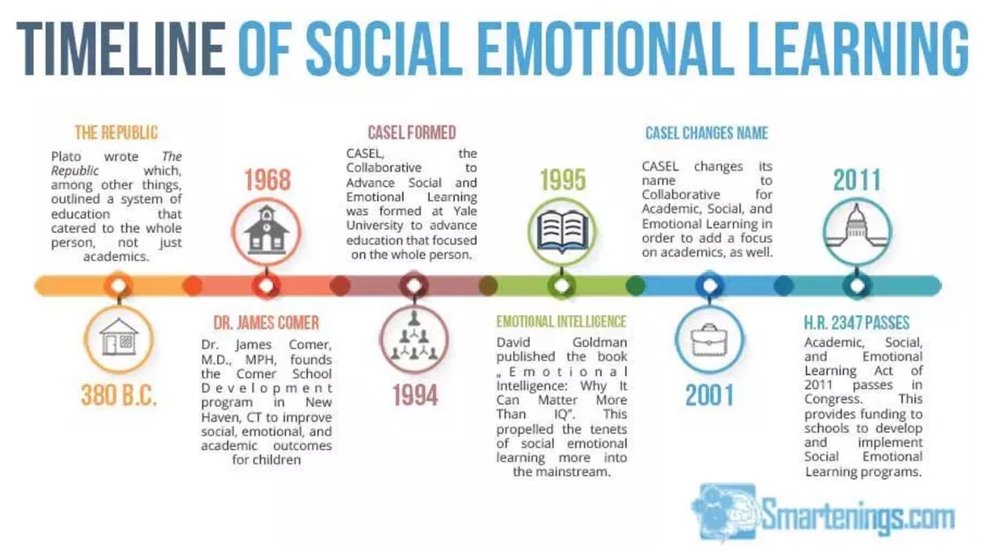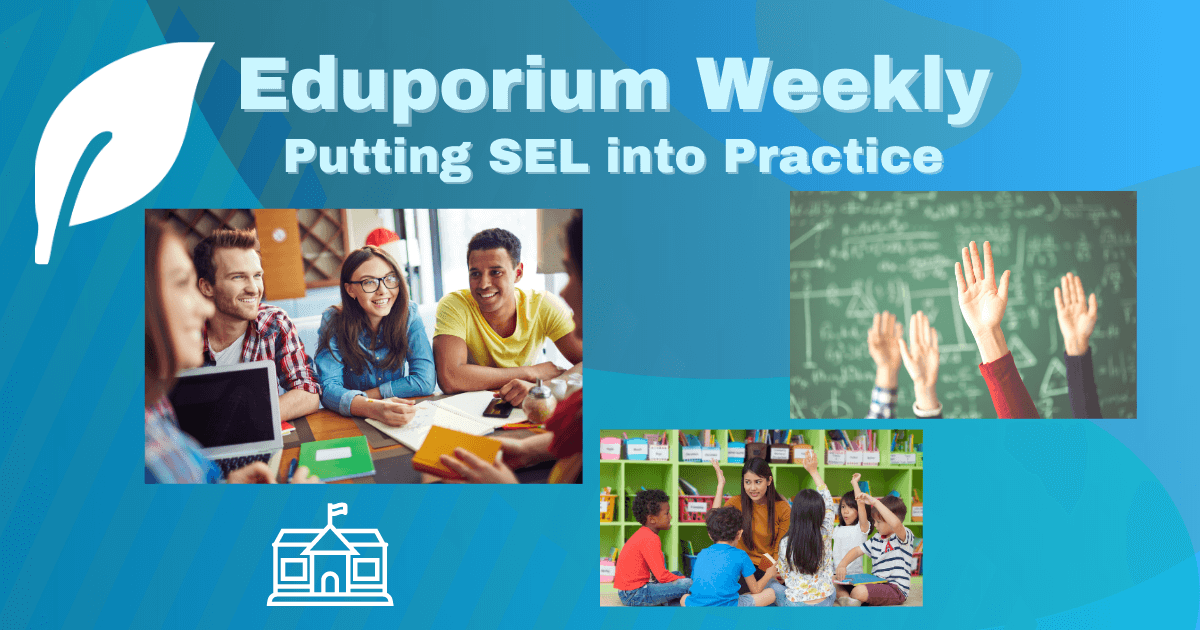We know that instruction has shifted a great deal from the pre-pandemic norms everybody preferred. After dealing with the challenges of remote learning (and now teacher shortages), educators, administrators, and students are likely still wondering if normalcy will ever be back. Distributing assignments and administering assessments have also evolved as has how students show their creativity. This whole ordeal has, however, allowed (or perhaps forced) teachers to do more with social-emotional learning. In an ideal world, putting extra focus on SEL would be great but, in reality, it's often another thing educators must navigate and plan for. And, though they don't need a true SEL curriculum, it's often helpful for students.
Social-Emotional Learning While Social Distancing
Most teachers are still trying to find a way to recapture normal instructional experiences and many of them also have added responsibilities with new vacancies. In some districts, educators have SEL guidelines they can follow. In many others, however, there are no concrete procedures. So, if they did choose to commit to SEL, educators may be doing this largely on their own. For students, social-emotional education starts with responsible decision making. We all know how the magnitude of certain decisions has been multiplied over the last couple of years. Showing a simple illustration of how choosing to not be safe can contribute to the spread of disease is a very relevant way to address responsible decision making. Helping kids understand the potential effects and, more importantly, consequences of the opposite helps tie SEL to the real world.
Starting simple with basic SEL strategies.
We know that remote learning and isolation have affected children socially, emotionally, and academically. Since returning to their schools, teachers have gone to great lengths to help restore this social-emotional balance. Incorporating SEL in their classroom is often as simple as asking a few reflective questions each day or giving students some time to share what they're feeling. Posing some simple questions at the start of class also remains a good way to connect with students, learn more about their emotions, and illustrate the SEL competencies they can develop. Students don’t even necessarily need to share their answers and could choose self-reflection instead. This helps them better compartmentalize things like their goals for the day, which skills will help them stay focused, and what they’re most looking forward to learning or doing.
How to incorporate SEL each day.
Some ways in which educators might creatively bring social-emotional learning into instruction include sharing encouraging messages with kids each morning (sometimes individually or sometimes collectively), encouraging students to celebrate their academic success, and assigning readings that cover SEL themes. Teachers could also share some resources with parents so they can practice some of the same techniques at home. For teachers who have the experience or some time to do a bit of research, it might also be good to integrate SEL-related elements in lessons, including encouraging kids to talk amongst each other, share their thoughts, or reflect on how they've grown. In any case, teachers continue to do an awesome job with this situation and maybe SEL is partly why.
How SEL Instruction Has Evolved
Social-emotional learning is now a concrete part of the curriculum within many K-12 schools and districts. New positions have emerged and some teachers are embracing new roles due to the demand for teaching social-emotional skills and practices. As SEL becomes more common in education, we all understand a bit more about what students want from it, what teachers can give them, what works well, what’s feasible, and what’s not. Different types of SEL have also led to added specificity in both instruction and planning. What was once a broad topic now includes a wide range of subtopics with new importance and value to kids.
Implementing SEL plans in school buildings.
Some school leaders begin their SEL game plans by focusing on how learning social-emotional skills will benefit each child. After all, regardless of race, political preference, culture, gender, and so on, all students need social connection, motivation, self-awareness, and plenty of the other relevant social-emotional traits. Some K-12 leaders believe that, before real learning fully resumes, students must re-establish their social-emotional balance and create or rebuild strong relationships and trust with educators. Once that happens, they should try to create similar bonds with their peers, which can increase motivation to learn collectively. It sounds great, but—like a lot of things—it’s usually easier said than done.
Using what we know to highlight SEL.
When it comes to SEL instruction, addressing these areas typically leads to improved student development and well-being. This is also a diagnostic option for teachers when trying to determine how to get struggling students back on track. Also, keeping social connection, motivation, and self-regulation in mind—since all are fundamental psychological needs—makes learning more relevant to every student. It can also perhaps help teachers create a framework for SEL instruction that applies to everybody. To determine what type of approach will work for all students, educators and school leaders need to determine common ground that children share and how to relate instruction to each one's psychological needs. Then, with a better idea of the climate in the classroom, they can create purposeful instruction for meeting these objectives.

Easy SEL Activities for Today's Classrooms
One of the great things about SEL is that, despite its importance, it’s very easy to illustrate. In classrooms, it typically doesn’t take complex measures to show students examples of positive behavior, mindsets, and other ways to enhance their mental and emotional state. In cases in which the overall learning experiences require redesigning, educators could lean on SEL to help fill in some gaps. On a related note, students with consistent SEL experiences often exhibit increased academic achievement, personal growth, and success. And, this isn't a surprise but you don’t always need a lot of technology devices to make SEL work, which is especially helpful for those who now place a greater focus on this area of development.
Reaching students with non-academic experiences.
Chances are teachers have various content and lessons to cover each day but there are other activities to attempt, too. If time and space are conducive to this, playing games can help foster SEL development. In game playing (physical games are typically better than digital games), children constantly encounter social-emotional elements, like decision-making, logic, memory, and collaboration, which are each important real-world skills. Another simple lesson teachers can start regularly exposing students to is a THINK approach. When students use words that are True, Helpful, Inspiring, Necessary, and Kind, they’re exhibiting positive behavior. And, this can positively impact themselves and the peers around them.
Communicating and understanding fears and feelings.
Roleplaying also allows students to see things from a different perspective and it's a very relevant teaching opportunity. Have them consider how choosing to go to a public place could have negative consequences if they get someone sick. They can also reverse roles and think about how they would feel if somebody got them sick. This SEL lesson, particularly, can have a powerful effect, especially in terms of helping students understand empathy. Finally, students may also benefit from peer-to-peer mentoring. If everyone feels safe collaborating, older students could pair up with younger students and simply discuss how things are going for them—on a personal level, an academic level, or within any areas. These connections have, of course, been tough to consistently find but can truly help kids rebuild social connections at school.
SEL and Equity for Today's Students
As if challenges directly related to the pandemic weren't enough, we've also seen the social and emotional impacts on students. On top of almost entirely reworking their instruction and their personal time, teachers have had to find new ways of connecting with their students—whether collectively or individually. Equity issues and reliable Internet access certainly impacted countless students, leading to stagnant participation and SEL progress. If any kids realized that their personal lack of at-home resources also meant that they'd probably miss out on learning experiences and social connections, they might also be down about that. On the other hand, missing those opportunities may have continued impacting them after returning to school.
Helping students manage fear and stress.
The simple fact is that school—something kids have experienced as a pillar in their lives—has dramatically changed. It was completely taken from some students and, for the youngest students, online learning was all they knew. This resulted in many children worrying about the prospect of permanently being away from friends and in a remote situation. While we know distance learning is implemented out of caution, students might start to connect it to teacher shortages, too. And, without familiar teachers there to explain things to them in a way they understand from somebody they trust, they might not be in a great place mentally. On top of academic stress, the emotional effects are just as troublesome—and just continue to recur.
How can we return?
Depending on how aware they are and what they hear, students may feel alone or they may believe others are experiencing many of the same things as them. The fact, however, is that the last two years have been very unique for almost every student. Despite student trauma, using equitable SEL as a vehicle to help kids regain normalcy remains one of the better options. Plus, in spreading the top tenets of SEL, educators can help students build relationships by seeing situations from others' eyes. Especially in schools in which kids all come from different backgrounds, messages of unity despite uniqueness are often very powerful. Then, despite the inequities throughout the pandemic, teachers can start to uplift every student's voice, promote togetherness, and regain equity.

How to Teach Social-Emotional Learning
Social-emotional learning and the mindsets it helps students develop can drive growth both in and outside the classroom. Particularly now, since many students are still navigating uncertainty, SEL experiences have become valuable. Academics are only part of the equation and students need strong social-emotional skills to be fully ready for the future. These include setting realistic goals, better understanding their feelings, and showing empathy for others, which are each extremely relevant in today's learning environments. Also, SEL involves students (as human beings) learning about themselves to understand how to regulate emotions in a healthy way. Plus, it can help enlighten them on how to interact with peers they see daily.
SEL and students seeing their value.
With intentional SEL instruction, educators can teach kids how to effectively connect with themselves and friends. This goes beyond academics and helps students develop into complete members of society. They could also teach students some of the most important competencies they can learn, including how to cope with everyday challenges (very relevant at the moment), how to use self-discipline, how to properly manage their impulses, and how to recognize and manage their emotions. This helps educators show students that they're aware of their mental health situations and how they've been affected. Also, for students, aligning their heads, hearts, and hands in classroom activities helps them stay balanced and focused.
Mindfulness and mental strength.
SEL instruction has no grade level distinction and you don't need any dedicated SEL curriculum (though creating one is fine). This is largely because teachers can simply drop SEL-related nuggets into instruction very often. SEL exposure can help kids apply mindfulness to problem solving by staying calm, connecting with others, and using mental strength. Once they get used to social and emotional learning, the skills they learn are those they can keep using throughout their lives. While developing these skills, they're also often relieving some stress and anxiety, which is important in today’s classrooms. So, however they’re learning, social and emotional needs and outcomes are likely a focal point for many educators. And, students are the ones who benefit in both the short and long term. Follow us on Twitter and Instagram for more.




